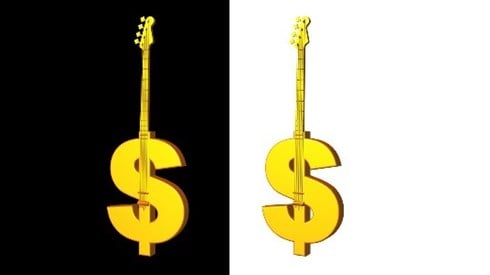Portfolio Construction, Low Yields, and Inflation

April 19, 2021

Longtime readers of Captive.com will recognize the name "Strategic Asset Alliance" (SAA). It provides investment advice to captives and public entity pools and hosts an annual conference. Not surprisingly, one topic at this year's conference, held in March, was the outlook for interest rates. The presentation was the precursor to this discussion of portfolio construction, low yields, and inflation.
The following quote is borrowed from SAA Managing Director Dan Smereck's presentation, available on the SAA website, titled "Lower Rates for Longer—Again": "The good news is that we can finally have confidence in our interest rate forecasts. The bad news is that we can finally have confidence in our interest rate forecasts. The Fed has said to expect rates to be near zero for the next 2 to 3 years. And Fed Chair Jay Powell's term doesn't end for another 7 years. With practically every insurer's book yield greater than their market yield, Mr. Powell has just told you to expect lower investment income. Financial markets are getting more complex every day. With 'lower rates for longer,' the markets just became more perilous."
My first question then is how perilous are your captive insurance company's portfolio and its underlying construction? As interest rates have fallen, the natural tendency within fixed-income allocations has been to extend out the maturity curve to capture slightly greater coupon income. This, in turn, has also extended the duration of the portfolio. "Duration" can loosely be defined as the sensitivity of the price of the bond to a change in interest rates.
If your captive's investment portfolio mirrors the description above, you need to pay particular attention to what the Federal Reserve System is doing and how the market is reacting. The reason being bonds with the longest maturities and lowest coupons have the longest durations. As noted above, these securities will therefore suffer the greatest price decline when interest rates rise. Since bonds are primarily used in captive insurance company portfolios to provide readily accessible cash for meeting claim payments, you don't want to find that in order to raise cash you need to book a large realized loss.
And while the Federal Reserve continues to promise that rates will remain near zero on the short end of the curve, that is not a guarantee. What captive boards need to understand, however, is that while the Federal Reserve does indeed have significant control over the short end of the curve, it exercises far less control over the long end.
A March 8, 2021, Bloomberg Opinion article by Brian Chappatta, titled "The Fed Already Has a Cap on Long-Term Bond Yields," does a good job of explaining this phenomenon, as follows: "As I've noted before, the Fed only has direct control over shorter-term rates while longer-term yields are more prone to move based on market expectations for economic growth and inflation. But that's not to say the central bank has no say at all over the long end of the yield curve. Its 'dot plot,' which shows policy makers' projections for the fed funds rate, includes median estimates for not just the next few years but also the 'longer term….' Almost without fail, the Fed's longer-term dot has served as a soft cap on longer-term Treasury yields."
As Mr. Chappatta notes, long-term yields move on market expectations for inflation, hence the final part of the title for this article. This is where things start to get interesting. The Federal Reserve's take on inflation is higher inflation is coming but will be transitory. While the Federal Reserve's stated inflation target is currently 2 percent, Mr. Powell has acknowledged the Federal Reserve will stand pat if inflation runs higher than that for a period of time.
This may sound like the Federal Reserve has a firm handle on inflation, but captive insurance company owners should not be fooled into complacency. Inflation is not something the Federal Reserve can directly control because to a large extent it's driven by market assumptions. Investment portfolio managers from the baby boom generation well remember the inflationary pressures of the late 1970s and early 1980s. While there are several explanations for what caused this economic disturbance, one prevailing viewpoint is monetary policy. During the early and mid-'70s, politicians allowed massive budget deficits to build up, which led to economist Milton Friedman's quote: "Inflation is always … a monetary phenomenon."
Today, we appear headed down this path again, although there is considerable disagreement over whether the result will be the same. Part of this problem lies in the fact that the bond vigilantes have seen inflation lurking around the corner multiple times over the last decade only to be proven wrong. A new viewpoint argues that deficits and deficit spending do not automatically lead to increases in inflation, especially during periods of low interest rates.
The next year appears to have all the conditions coalescing to test this hypothesis. Recently, Goldman Sachs revised its forecast for gross domestic product growth for 2021 to 8 percent. If it was correct in this prediction, it would mark the fastest growth rate for the economy since 1951. The question is whether the supply side will be able to fulfill the demand side of the equation. Goldman appears to believe this is the case, since its inflation forecast is 2.1 percent.
As a captive insurance company owner, with a fixed-income portfolio, how confident are you in the forecasts? While you might give up income in the short-term, from my perspective it may be beneficial to guard against the unexpected surprise of inflation rising higher and being prolonged more than the Federal Reserve and the experts predict. In my book, this is one of those black swan events that warrants a bit of caution. You need only read my article "3 New Year's Resolutions for Captive Insurers in 2020" to see what I mean.
Happy investing.
April 19, 2021



